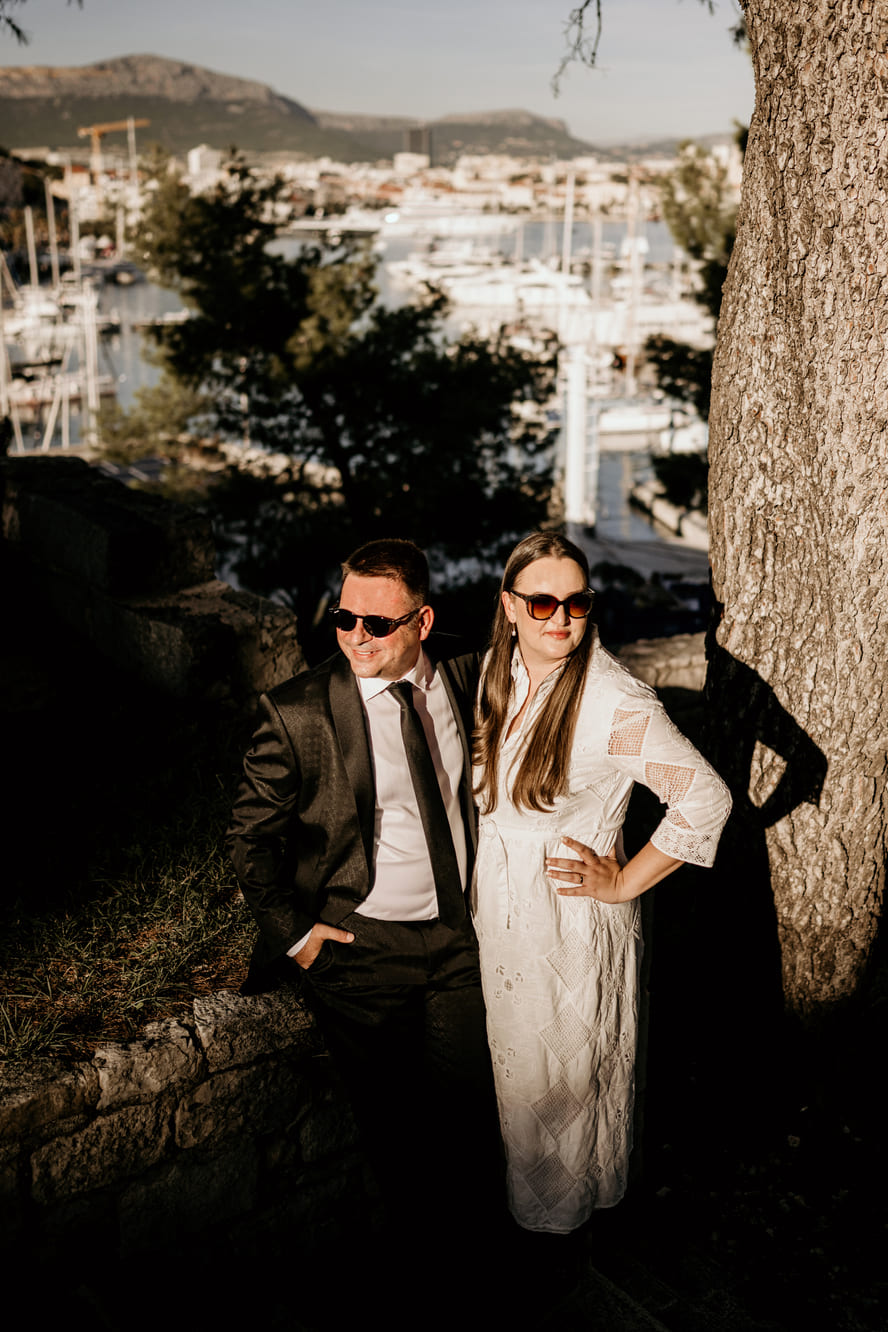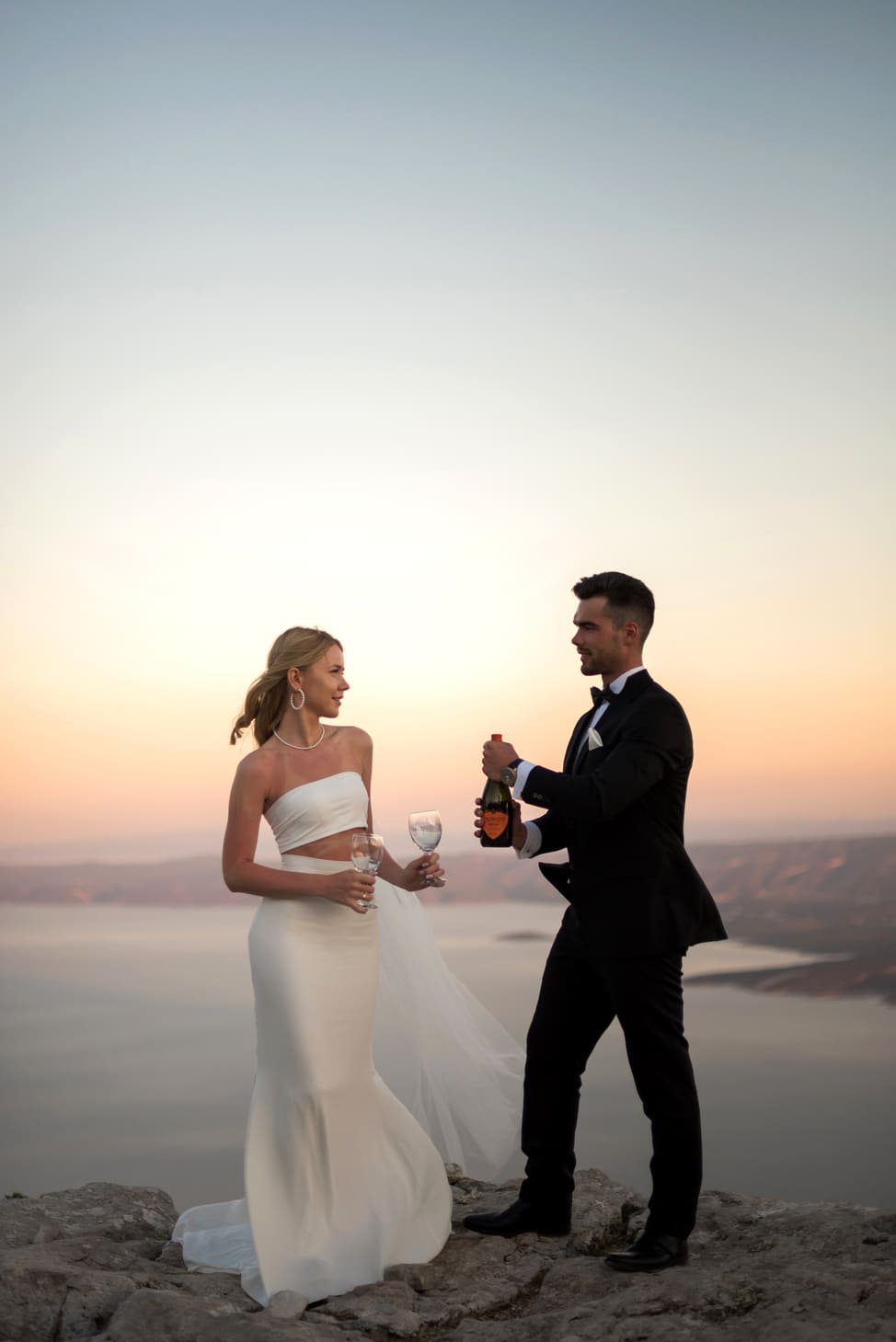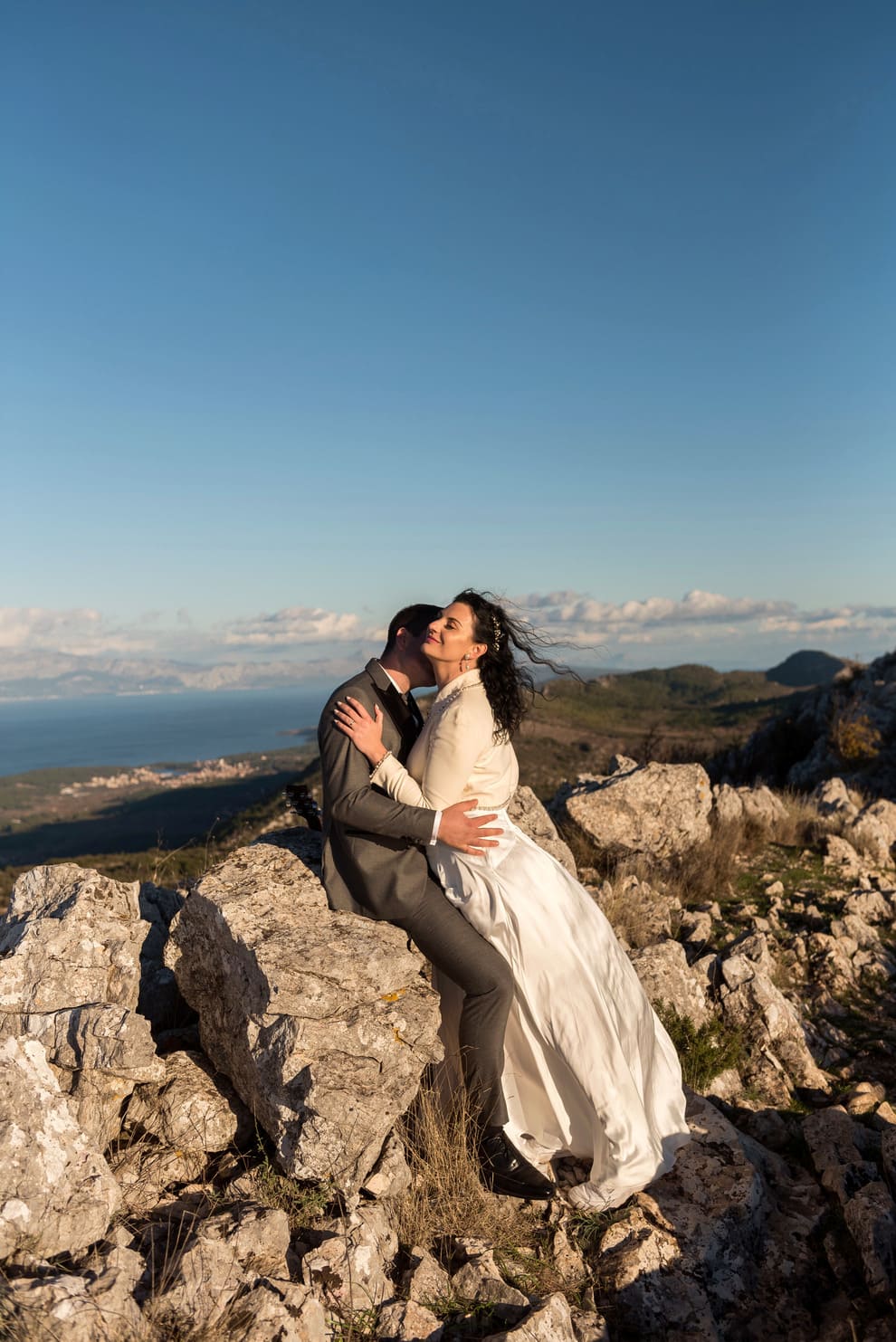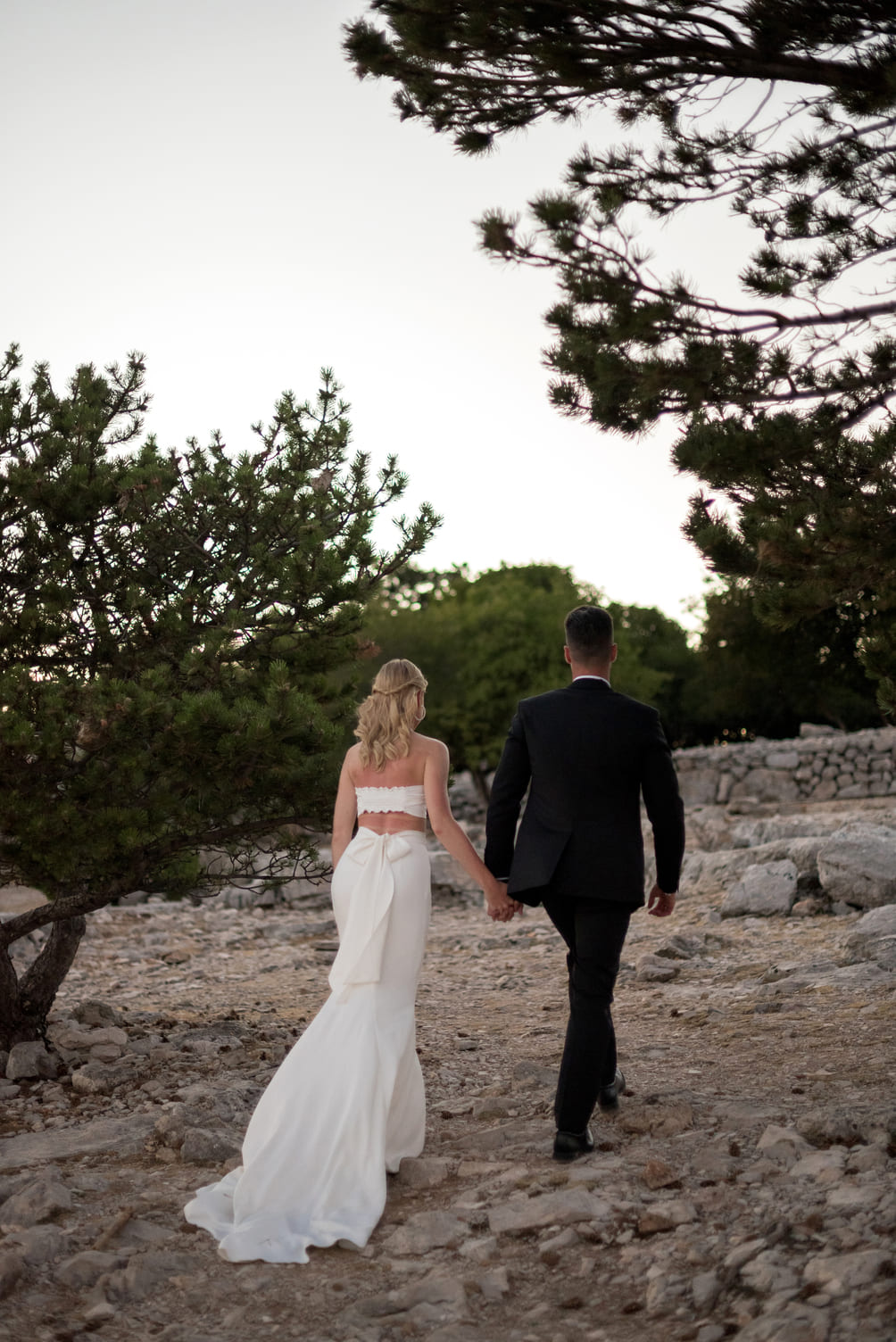The power of light in wedding pictures
Light is the spirit of photography, and when it comes to shoot wedding pictures, it becomes the magical ingredient that transforms every moment into an extraordinary memory: by highlighting the details of the bride’s gown, or by making the spouses faces glow during their first dance, the interplay of light and shadow con create a flawless romantic atmosphere.
A skilled wedding photographer understands that mastering light is crucial to capturing emotions, and knows how to use every type of light for its most ideal goal. Natural light is often considered the most flattering, and it can create soft pictures during outdoor ceremonies or shooting sessions. The golden hour, which we are going to discuss in this article, bathes everything in a warm light that can make even the simplest scenes look breathtaking. However, artificial lighting also plays a vital role, especially during indoor receptions or evening events: a creative use of the flash can freeze motion on the dance floor or create silhouettes and backlit effects.
The challenge for photographers lies in adapting to the ever-changing lighting conditions throughout the wedding day, from the bright morning light to the more dim and intimate lighting of the reception venue, and understanding how to manipulate light – whether it’s through reflectors, diffusers, off-camera flashes – allows photographers to maintain consistency and quality in their pictures regardless of the setting.
Light and shadows are also adjusted in the post-processing to enhance specific aspects of the pictures, to draw the viewer’s eye to the key elements. Lights in wedding pictures doesn’t only serve the purpose to illuminate, but also to evoke emotion and create the magic atmosphere that every wedding album deserve.
How it affects your wedding pictures
Understanding the science behind light and its impact on your wedding pictures can help you appreciate the artistry of your photographer and, maybe, also make informed decisions about your wedding day timeline and venue selection.
At its core, light is electromagnetic radiation that travels in waves, and different wavelengths correspond to different colours. The human eye perceives these wavelengths as visible light, which is just a small portion of the electromagnetic spectrum. In photography, we’re primarily concerned with how this visible light interacts with subjects, surfaces and the camera sensor, because the quality of light plays a crucial role in the outcome of your wedding pictures.
Soft light, often found during the golden hour, creates a warm and flattering glow that minimizes harsh shadows and brings out the best in skin tones (this is the reason why many photographers prefer to schedule outdoor portrait sessions during these times). On the other hand, hard light, typically experienced during midday sun, can create strong contrasts and unflattering shadows, bringing a lot of challenges to photographers.
The direction of light also significantly influences the mood and dimension of the pictures: front lighting, where the light source is behind the photographer, can produce bright, evenly lit images, but may lack depth; side lighting adds texture and dimension and it creates a more dramatic effect; backlighting, where the light source is behind the subject, can create beautiful silhouettes or, when used with flash, can produce a dreamy effect, pretty popular in romantic wedding portraits.
Colour temperature is another crucial aspect of light that affects the overall mood of your pictures: measured in Kelvin, colour temperature ranges from warm (lower temperatures) to cool (higher temperatures). Early morning and late afternoon light tends to be warmer, creating a cozy, intimate atmosphere in photos, while midday light is cooler and can appear harsh or even “clinical” if not managed properly. There are many modern cameras and editing software that allow for adjustments in white balance to compensate for different colour temperatures, ensuring that whites appear truly white and colours are accurately represented.
The intensity of light is also something to take in consideration. In low-light situations (indoor receptions or evening ceremonies) photographers must use techniques like increasing ISO sensitivity, widening aperture or artificial lighting to capture well-exposed images. However, these adjustments require a skilled hand with experience because it can introduce challenges like increased noise or reduced depth of field.
A very particular aspect when it comes to wedding photography is also to understand how different materials interact with light: fabrics like satin and silk in wedding dresses can reflect light differently than matte fabrics, potentially causing overexposure in certain areas if not carefully managed. Similarly, metallic decorations, glassware, and jewellery can create interesting light effects but can also create unwanted reflections and hotspots.
As technology advances, new tools and techniques emerge that allow photographers to push the boundaries of what’s possible with light. High dynamic range (HDR) photography, for example, allows to capture a greater range of luminosity, potentially saving details in both highlights and shadows that might otherwise be lost. Advancements in low-light performance of camera sensors have made it possible to capture stunning images in challenging lighting conditions that would have been impossible just a few years ago! The ability to read and work with available light, as well as supplement it when necessary, is what separates exceptional wedding photographers from the rest.
Why is this interesting for couples that are planning their wedding? Understanding these principles can help in making decisions that will positively impact your pictures: choosing a venue with large windows for natural light, scheduling key events like the ceremony or first dance during optimal lighting conditions, discussing lighting preferences with the photographer can all contribute to achieving the wedding pictures of your dreams! Remember that, while understanding the science of light is important, it’s the artistic vision and skill of your photographer in harnessing this light that will ultimately create the magical vibe you’re looking for.
What is the Golden Hour
The golden hour, often referred to as the “magic hour” by photographers and cinematographers, is a captivating period of time shortly after sunrise or before sunset when the sun is low on the horizon and it casts a warm, soft and diffused light across the landscape. During the golden hour, the sun’s rays travel through more of the Earth’s atmosphere, which filters out the harsher blue light and allows the warmer red, orange, yellow tones to dominate. The low angle of the sun also produces longer and softer shadows that add depth to the subjects, making it ideal for portrait photography, landscape shots but also cinematic scenes.
Despite its name, the golden hour is not always precisely an hour long: its duration can vary based on factors such as season, weather conditions and latitude. In locations closer to the equator, the golden hour may be shorter due to the sun’s more rapid ascent or descent, while in areas closer to the poles, it can last significantly longer, especially during the summer months.
Capturing the perfect golden hour shot requires planning, patience, and also a bit of luck, as weather conditions can greatly affect the quality and intensity of the light.
Why the Golden Hour is ideal for wedding pictures
The golden hour is a wedding photographer’s dream coming true.
For couples looking to capture the essence of their special day, the golden hour is an unparalleled opportunity to create stunning quality pictures. This is because the quality of light during this time is simply unmatched: it is soft, diffused and incredibly flattering, making everyone look their absolute best. Harsh shadows disappear, and they are replaced by a gentle luminescence that enhances features and cancels imperfections.
This natural beauty boost is particularly beneficial for wedding pictures, where looking radiant is a top priority for the bride, groom and their entire wedding party. The warm, golden tones cast by the low-hanging sun add a touch of romance to every frame, perfectly complementing the atmosphere of a wedding celebration.
Photographers love the golden hour because it offers versatility and creativity in shooting. The interplay of light and shadow allows for a wide range of moods and styles: dreamy, romantic, dramatic, artistic… The golden hour also provides a natural backdrop that’s really hard to beat: as the sun dips towards the horizon, the sky transforms into a canvas of warm tones – golds, oranges, pinks, purples – and this creates a breathtaking setting for outdoor portraits and also group shots.
And it’s also not just about aesthetics: the golden hour often coincides with a more relaxed part of the wedding day, after the ceremony but before the reception kicks into full swing. This timing can lead to more spontaneous, candid shots as the couple and their guests begin to unwind and enjoy the celebrations.
However, capturing the perfect golden hour shots requires careful planning and expertise, as I already mentioned earlier. The window of opportunity is relatively short, and timing is crucial. Experienced wedding photographers know how to make the most of this fleeting moment, working efficiently to capture a variety of shots while the light is at its best. They’ll often scout locations in advance, planning compositions that will shine during this time of the day. For couples considering golden hour photography for their wedding, it’s important to discuss this with their photographer and consider adjusting their wedding timeline to accommodate these shots. The results are for sure well worth the effort.
Tips for making the most of Golden Hour wedding pictures
First and foremost, timing is everything. Work closely with your photographer to determine the exact time of golden hour on your wedding day or your shooting day and plan your schedule accordingly. You may also consider having a “first look” session during this time if your ceremony is later in the day.
Communicate with your venue about the best outdoor locations that take advantage of the golden light and scout these spots in advance if possible. Opt for warm, complementary colours in your wedding decor to enhance the golden glow and be prepared to move quickly as the golden hour is fleeting.
Have your must-have shot list ready and prioritize the most important photos. Don’t forget about backlighting, embrace lens flare for some artistic shots and consider using props like veils or sparklers to play with the light. Remember that golden hour isn’t just about portraits, but you can also use it to capture candid moments of your guests enjoying the beautiful light too.
You should also be flexible and have a backup plan in case of cloudy weather. Trust your photographer’s expertise in utilizing the light and follow their direction for the best results. Don’t be afraid to get creative with poses and locations. Keep in mind that the light changes rapidly during this time, so be patient if your photographer needs to adjust settings between shots.
Remember also to take a moment to simply enjoy the beauty of the golden hour with your partner – sometimes the most magical photos are the ones where you’re genuinely lost in the moment!
Golden Hour vs other times of the day: Pros & Cons
We already know that when it comes to wedding photography timing is everything, and the debate between golden hour and other times of the day is a hot topic among photographers.
The golden hour has long been addressed as the pinnacle of natural lighting for photography, making it a favourite among photographers for its versatility and ability to create striking images with minimal effort.
However, the golden hour isn’t without its downsides. Its fleeting nature means that photographers and couples have a limited window to capture their desired shots, which can add pressure to an already hectic wedding day schedule. Additionally, the specific timing of the golden hour varies depending on the season and location, potentially conflicting with other important wedding events.
On the flip side, shooting at other times of the day offers its own set of advantages and challenges as well. Midday light, often considered the bane of photographers due to its harsh, overhead quality, can actually be used creatively to produce more “dramatic”, high-contrast images. The bright light can be perfect for capturing the vibrancy of colourful wedding details and it’s perfect for black and white photos.
Shooting in the middle of the day also provides more flexibility in terms of scheduling and can be more convenient for couples who prefer a traditional timeline. However, the strong sunlight can create unflattering shadows on faces and may require more skill and equipment from the photographer to manage these downsides effectively.
Cloudy days, often dreaded by couples hoping for sunny wedding photos, can actually be a blessing in disguise. Overcast skies act as a natural diffuser, because they create a soft lighting that’s flattering for portraits and reduces the need for artificial lighting setups. This consistent light allows for greater flexibility in shooting locations and times but may lack the warm, romantic glow that we all typically associate with wedding pictures.
Night photography has the ability to create original shots using creative lighting techniques. However, it requires more technical skill and equipment from the photographer and may not be suitable for all wedding venues.
At the end of the day, the choice between golden hour and other times of the day for wedding photography depends on various factors, including the couple’s preferences, the wedding schedule, the location, the photographer’s style and expertise. While the golden hour undoubtedly offers a lot of opportunities, skilled photographers can create beautiful images at any time of day and make the most of every lighting condition.
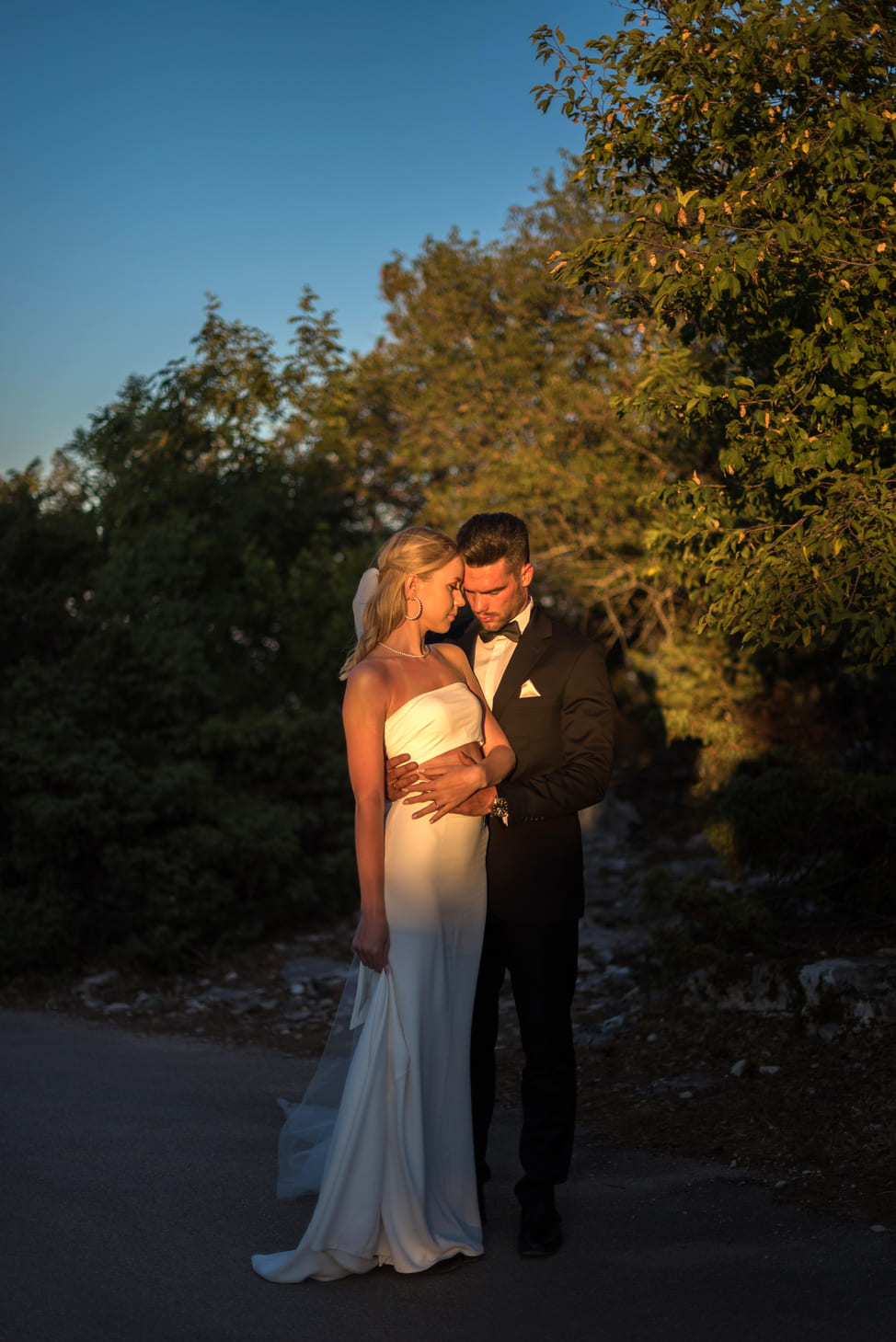
The golden hour in wedding pictures offers a unique opportunity to capture the essence of a couple’s special day. Its soft, warm light creates an unparalleled romantic atmosphere perfect for this type of photography sessions.
While it presents some logistical challenges, the results are often worth the extra effort and planning.
However, it’s important to remember that skilled photographers can create beautiful images at any time of day. The key is to work closely with your chosen photographer, communicate your vision, trust their expertise.
Ultimately, your wedding pictures should reflect your personal style and the atmosphere of the day. Golden hour can provide a fantastic background, but the true magic lies in the emotions and connections shared between you, your partner and your loved ones.
